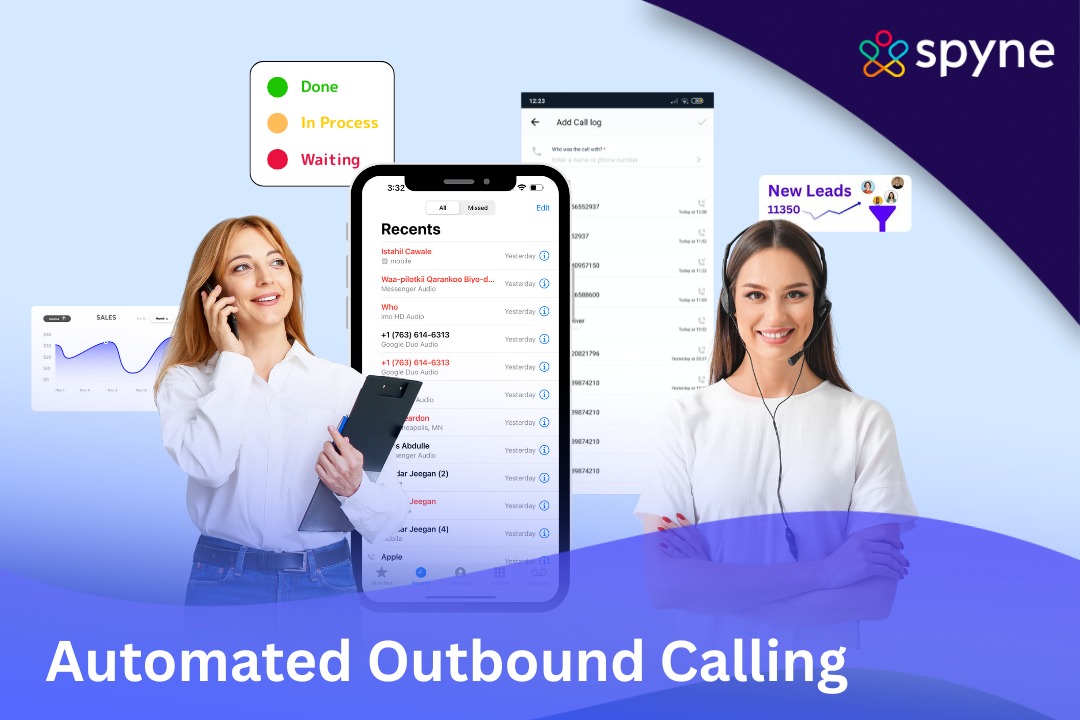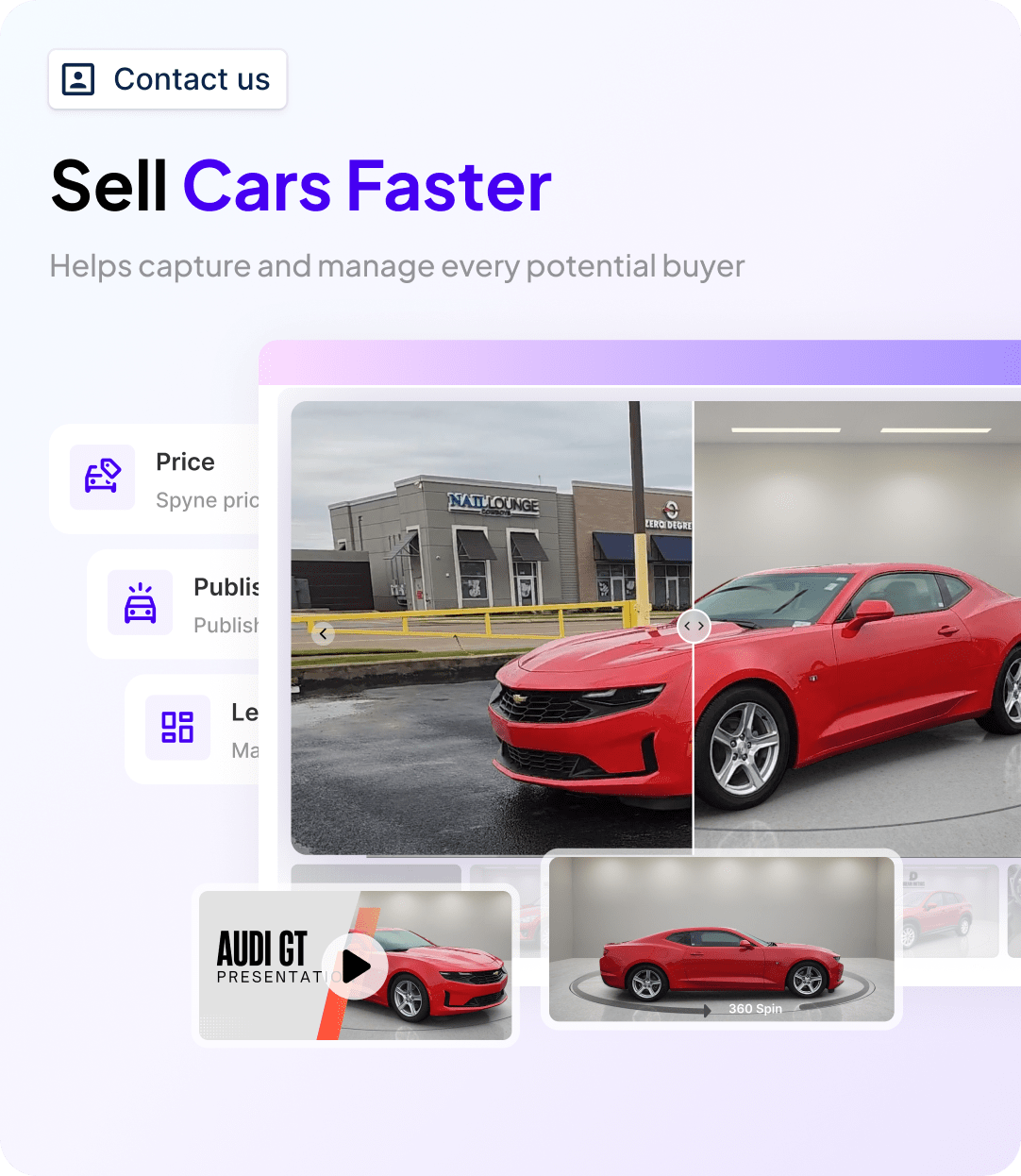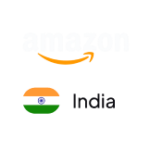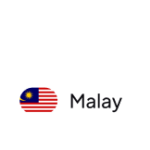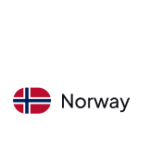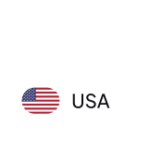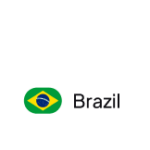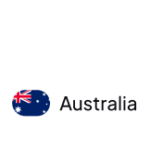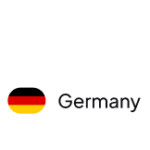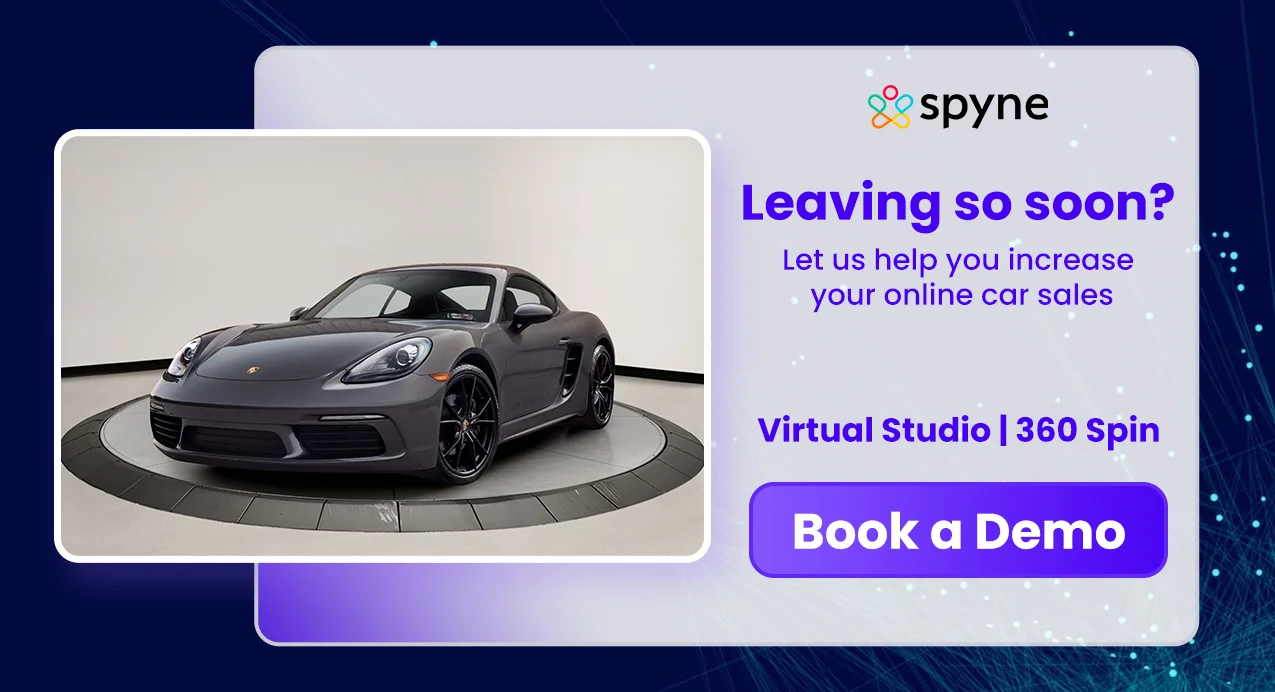In this evolving world of the automotive industry, manual handling of the call processes can be overwhelming for businesses. This increases their workload and creates pressure to make a high number of calls in a given duration. To address this problem, automated outbound calling comes in. Instead of manually dialing hundreds of leads, teams can now automate outbound calls to reach more people in less time without compromising on personalization. This allows your agents to interact with customers, reduce the interval between calls, and focus on real conversations. This technology of call automation has increased the business’s productivity by 30% to 50%.
In this blog, we highlight the benefits and features of this calling mechanism, how it works, best practices for automated calling, and tips for choosing the right automated outbound dialer for your business.
What is Automated Outbound Calling?
Automated outbound calling is a method that automatically dials phone numbers without requiring manual intervention. It involves the use of pre-recorded scripts and messages to communicate with customers with the help of auto auto-dialer. It is an application that automates outbound calls, helping businesses to handle high volumes of calls efficiently. The automated outbound technology helps in tasks like lead generation, setting appointments, sending reminders, and conducting customer surveys.
Automated outbound calls and messages help the sales and support team route the incoming calls to the available agent and connect faster with customers. In case of no responses, a follow-up message is automatically sent by the system. Some Agents practice progressive dialing with this outbound call automation, which means back-to-back calling, while others track agents’ availability and call volumes for predictive dialing to increase the number of calls.
How Does Automated Outbound Calling Work?
Outbound call automation streamlines the call processes of a business by the use of auto dialer software to make calls, and helps in tasks like lead generation and appointment reminders. Here is how the process of outbound dialing works
1. Fetch Contact from CRM
No calls can be made without customer contact numbers. The automated outbound dialer imports the contact list from the CRM or sales platform. This list consists of phone numbers, addresses, and other customer data to deliver personalized responses during a call.
2. Placing of Automated Calls
Once the data is collected, the automated outbound calling software places calls, whether in a power, progressive, or predictive manner. This gives clear visibility into system efficiency.
3. Connecting Calls to Agents
The automated outbound dialer provides smart features like call diversion, or routes calls to an available agent, helping reduce wait time and letting your team focus on real conversations. In case of unanswered calls, the system leaves a pre-recorded message or greeting and moves further.
4. Tracking Call Outcomes
The outbound caller notes the result of every call, whether answered, went to voicemail, or failed. This helps in call tracking and monitoring agents’ performance, providing insights into the progress of the calling campaigns, helping you to identify improvement opportunities.
Top 6 Benefits of Automated Outbound Calling for Businesses
The automated outbound calling solutions offer numerous benefits for businesses. It helps to reduce costs, brings consistency, and enhances efficiency and productivity. Additionally, it saves the agent’s time in waiting for calls. This way, every minute counts, and no time is wasted. Below are some listed benefits of outbound automated calling.
1. Enhance the Call Agent’s Productivity
The outbound calling system enables businesses to make a number of calls in a short duration, hence freeing the staff to focus on core sales activities. This ensures efficiency and productivity in the workflow of the team.
2. Cost Reduction
The automate outbound call dialer eliminates the need for manual call dialing and handling. This enables BDC companies to reduce the operational costs associated with hiring agents for call processes.
3. Consistent Messaging Pattern
Outbound caller ensures every customer receives the same accurate and professional message for the information and updates in order to maintain the consistency in the messaging pattern of the business.
4. Improved Customer Engagement
Since the call processes are being automated, agents get more time to spend on interactions with high-quality prospects to provide personalized responses and build stronger relationships.
5. Ensure Regulatory Compliance
One of the important benefits of the outbound calling system is that it ensures TCPA compliance to keep the customer contact information safe and secure. This helps to reduce the risk of legal issues by practicing call screening methods.
6. Saves the Agent’s Time
Manual dialing of numbers and waiting for them to get connected wastes a lot of time for agents that could have been used for other priority tasks. The outbound calling reduces the time between calls, maintaining productivity.
Top 7 Key Features of Automated Outbound Calling Solutions
The key features businesses look for in an automated outbound calling software are automatic dialing, system integration, real-time reports, and scripting calls to gain customer insights. This ensures improved call efficiency and campaign performance.
1. Automatic Placing of Calls
Phone numbers are dialed automatically, saving agents’ time to focus on core sales activities and interaction with customers. It also provides automated calling back to customers who were unable to get connected with agents.
2. Tracking Outbound Caller Performance
With the call monitoring software, businesses can track customer interactions to recognize their preferences and purchasing habits. They can also monitor the agent’s performance to identify the areas they need to work on.
3. Efficient System Integration
An effective automated outbound dialer integrates well with other systems of business, such as scheduling software, communication platform, etc, to streamline workflow and encourage engagement across various platforms.
4. Real-time Call Transcriptions
The outbound automated calling provides real-time call transcriptions with accuracy to personalize responses for customers, enhancing their conversations and experience.

5. Facilitates Answering Machine Detection
An efficient automated outbound calling software has the ability to detect whether a call is being answered by an agent or a machine. This can segregate the voicemails, ensuring agents only process live engagement.
6. Customizable Dashboard
The outbound call software offers a customizable dashboard based on the business size and requirements, with a user-friendly interface that has minimal learning requirements.
7. Offers Multiple Call Dialing Modes
Businesses should seek for automated outbound call system that offers multiple dialing modes such as power mode, predictive mode, or progressive mode for maximizing the volume of outbound calls.
Key Factors for a Successful Outbound Calling System
There are several key factors that are crucial for the success of outbound calling campaigns. These include defining clear goals, targeting the right audience, making interactive call scripts, and optimizing the calling strategies.
1. Defining Your Business Goals
Define clear BDC metrics for your business that are to be achieved by the campaigns. These include lead generation, appointment scheduling, conversion rates, or increasing sales opportunities.
2. Targeting the Appropriate Audience
Categorize your audience based on the intent, location, and preferences to ensure you target the right segment of the audience and don’t waste time calling the wrong prospects.
3. Use the Right Technology
An effective automatic outbound call system makes sure to provide advanced technology, including an AI phone answering service for businesses to reduce the time of inactivity and enhance their calling operations.
4. Optimize Interaction Strategies
Don’t forget to leave the human touch behind while chasing automation. Make sure the automated outbound calls include a personal touch in the responses without making it sound completely robotic.
5. Integrate with Systems to Gain Analytics
Integrate effectively with other systems and platforms to gain insights and analytics into all the call quality, agents’ performance, and identify the bottlenecks in order to improve your BDC with CRM integrations.
What are the Best Practices for Automated Outbound Calling?
The outbound call strategies can be improved by following the best practices, like using advanced dialers, selecting the right audience, automating workflow, and continuously tracking performance. The following are some approaches that can be applied for a successful outbound calling mechanism.
1. Use Advanced Dialing Software
Make sure to use advanced call dialer software that offers multiple dialing modes, such as power, progressive, or predictive dialer mode, to reduce the wait times between calls and increase the number of calls.
2. Target High-Quality Prospects
Rather than wasting time on interacting with low-intent leads, an automated outbound dialer should identify and prioritize hot leads by AI lead scoring for prior engagement, thus increasing conversion rates.
3. Personalize the Interactions
Customer need personalization in their vehicle buying journey, hence to improve interactions, offer personalized responses based on their preferences and past interactions. This ensures enhanced engagement and gains long-term loyalty.
4. Follow the Rules
Make sure your automated outbound calls and messages follow the legal practices and meet all the regulatory requirements to ensure you don’t end up paying fines.
5. Conduct Feedback Surveys
Conduct comprehensive feedback surveys to gain insights into what strategies are working in the campaigns and how to increase BDC effectiveness for your business.
6. Regular Performance Analysis
Monitor the performance of your campaigns at regular intervals to identify trends and patterns of customer behaviour. Analyze your strategies and follow BDC tips for overall operational efficiency.
How to Choose the Right Automated Outbound Calling Solution?
Choosing the right automated outbound dialer does not only mean good features but also that it should fit in your business requirements, your team’s adaptability to new software, and your pricing structure. Here are a few tips to consider when picking up an automated outbound calling software.
1. Evaluate your Business Requirements
Choose a Cloud call center solution that offers features resonating with your business goals and requirements, such as lead generation, customization, or flexibility. It should also fit your industry type to support your operations.
2. Ensure Seamless Integrity
Your outbound calling system should support seamless connectivity with existing CRM tools or communication platforms to offer automation in workflow, improve the efficiency of fixed operations, and drive revenue growth.
3. Scalability for Your Growing Number of Contacts
Your business is going to boom today or tomorrow, so you must go for a call dialer that can store high volumes of contacts and make numerous calls to maximize productivity.
4. Comprehensive Training and Testing
Conduct comprehensive testing of your outbound call dialing software to identify flaws at a prior stage and provide phone training to your teams to make effective calls and use the dashboard to enhance the user-friendliness of the software.
5. Pricing Structure of the Outbound Caller
Look for an automated outbound dialer that provides scalability, system compatibility, and many other features to support your growth and productivity without breaking your bank.
How to Prepare for Automated Outbound Calling Campaigns?
Automated outbound calling campaigns are not just about making calls, but about making calls at the right time, to the right audience, and with the right message. Whether you use a predictive dialer vs auto dialer, how you plan your campaign makes all the difference.
1. Create Interactive Call Scripts
Don’t make your customers bored with all those fixed boring replies. Create interactive and engaging BDC phone scripts and practice them to ensure confident and natural delivery of your message.
2. Optimize the Time to Make Calls
You cannot make a call to your target audience at any time of the day. Schedule an appropriate time based on their time zones and demographics to make calls, avoiding any kind of inconvenience to your audience.
3. Communicate Across Various Platforms
Develop an omnichannel contact center for engagement processes across various customer touchpoints like SMS, calls, or voicemail, ensuring increased lead conversion rates.
How Does Spyne Enhance Automated Outbound Calling Solutions for Car Dealerships?
Spyne’s Retail AI platform is specially built for automotive dealerships. We help car dealers run smarter and faster automated outbound calling campaigns, from improving agent productivity to engaging leads 24/7. Here is how Spyne stands out.
1. Automates Dealership Workflow
Spyne helps you do repetitive and time-consuming tasks like scheduling call backs, setting service appointments, and following up with customers with our automated lead follow up system for car dealerships.
2. Real-time Reports and Analytics
Get accurate reports and analytics to gain insights into call quality, customer satisfaction level, and agents’ performance, helping you make data-driven and precise decisions for your dealership’s growth.
3. Smooth System Integration
Struggling to get visibility into data from various systems? Spyne’s automotive CRM integrates seamlessly with your existing dealership systems, like DMS, scheduling software, and communication platform, to sync data and provide transparency into every activity.
4. Small Call Handling and Tracking
We offer features like automotive call tracking, routing calls to available agents, and providing real-time call transcriptions to analyse customer interactions and gain insights into their preferences and purchasing habits.
5. Scalability Along with Dealership Growth
Spyne is not restricted to a single size of automotive businesses. We are made for all. We scale as your dealerships grow and manage the increased volume of customer interactions by reducing the overhead costs of your car dealership.
6. Consistent Communication Support for Customers
We stay awake when you go to sleep. Spyne offers an automotive after hours answering service to provide round-the-clock support to customers contacting you after regular business hours. We ensure none of your leads fall through the cracks.
Conclusion
In today’s automotive world, dealerships can not become productive by manual processes of dialing calls. Automated outbound calling is the smarter way to connect with customers while saving time and reducing manual effort. Whether you’re running sales campaigns or follow-ups, using the right automated outbound call software can boost productivity, improve lead quality, and drive real results.
Spyne offers automation with the help of AI to streamline your operations, stay compliant, and make numerous calls to maximize growth. If you are still stuck with the traditional methods of dialing phone calls, upgrade your strategies today with our free demo to watch your sales and productivity rise.

